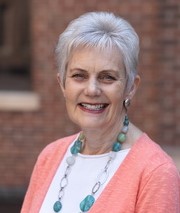Removing Barriers from the Digital Classroom
- Asa Olson
- Jan 15, 2021
- 3 min read
Updated: Jan 19, 2021
It’s more important than ever that the Bakken Center for Spirituality & Healing makes its courses accessible in these unprecedented times. As an academic technologist and a former professor, I’ve been surprised consistently by the small things many of us do that can create barriers for learners, especially learners with disabilities. The Bakken Center is fortunate to have faculty who care about these issues. In fact, during our first faculty meeting this fall, more than 70 percent of the instructors identified digital accessibility as a subject they hoped to learn more about. I was ultimately pleased by the number of our faculty who attended my recent accessibility training toward this end, and their attendance reflects one of our goals at the Bakken Center, as characterized by Center Director Dr. Mary Jo Kreitzer: “Promoting educational equity is a priority for the Bakken Center, and with the transition of most of our academic courses to virtual formats given the Covid-19 pandemic, it has become even more important to understand ‘best practices’ in the digital world.”
The Center has been prescient with its transition to virtual course formats. Before I came to the Center, my colleagues Kely MacPhail and Louise Delagran closely followed these best practices for online instruction, which actually draw from a major shift in architectural design over the last few decades. This shift recognizes what’s now an obvious fact of accessibility: people vary tremendously. Everyone is different, and our disabilities may not be inherent so much as they are created by our environment, which can hinder the way we interact with the world around us. The classic example is how a revolving door creates a “disabling condition” for someone who uses a wheelchair to get around. An automatic door is more accessible for people who use wheelchairs. The shift also recognizes that this accessible design can benefit people more broadly—parents with strollers or shoppers with carts, in this case. This design concept obviously applies to physical environments. It also applies to digital learning environments. We need to aim for a flexible, responsive course design, which is more universal.
Kely MacPhail, Louise Delagran, and Asa Olson
The pandemic has intensified the need for this sort of design since many courses have transitioned into online or hybrid formats. Digital learning environments can increase access for students who live far from campus or who work full time, but it can provide new challenges for students who use assistive technologies, like screen-readers and screen-magnifiers, and students who need to navigate digital environments by keyboard instead of mouse. It also poses issues for students who tend to live in rural areas or low-income, urban residential districts. At the beginning of the pandemic, I taught as a professor in southern Arkansas where many of my students came from disadvantaged backgrounds. Every one of my courses had multiple students who had limited or no Internet access when they returned home for the pandemic. Several had to drive to the nearest McDonalds for the Internet, but they had limited access to a vehicle and no public transportation. Believe it or not, accessibility initiatives helped my students stay afloat. They ensured that my course technology was robust enough for students who relied on smartphones or slow Internet speed.

Our accessibility initiative is ongoing, and it overlaps with other initiatives at the Center, including our current exploration of anti-racist pedagogy.
“While anti-racist pedagogy, as the name suggests, focuses on racism, the strategies it offers—with respect to course goals and content, along with teaching and assessment strategies—also open the tent to all students who experience less privilege due to marginalized identities," said Delagran. "And these solutions benefit all students, because working to create equitable and effective instruction and assessment simply creates better courses.”
”Accessibility has been a driving force in our approach to designing and developing non-academic materials as well." As MacPhail explains, “When creating the website for a recent business development project, the client asked if it was going to be ‘accessible’– we were able to quickly respond in-depth about the ways our design met Web Content Accessibility and UDL guidelines. Our response did more than reassure the client; it also increased their understanding of these essential accessibility principles.” The Bakken Center has pursued these initiatives for some time now, and the COVID-19 pandemic has since spotlighted our importance and timeliness. We will continue to pursue them and assist our instructors with more universal course design, even after the spotlight fades.












Comments